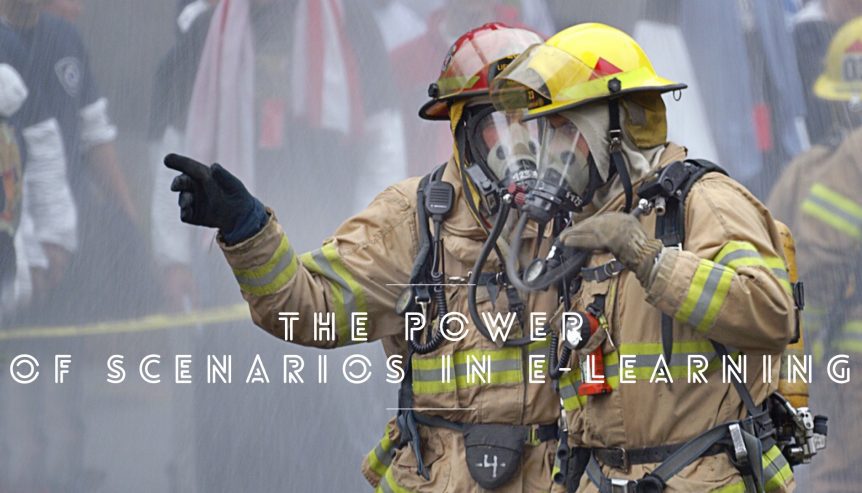The Power of Scenarios in E-Learning
One of the best ways to learn is through experience. Rarely, however, is this a linear process where a single experience leads to a significant new skill and enhanced knowledge. Instead, learning through experience happens in stages.
This normally involves making mistakes, taking good decisions, and taking bad decisions. When you put it all together the result is you learn a new skill or acquire new knowledge.
Now, wouldn’t it be great if you could mimic this style of learning in an environment where mistakes don’t result in lost sales, downtime, or negative customer experiences? With e-learning, you can, by using scenarios.
Role Playing Reborn
Of course, if you have ever been in a group learning environment, you will have experience of this via role playing exercises. We know that role playing can be an effective way to learn. After all, it’s something you probably started doing as a very young child. In children, role-playing encourages the use of imagination and helps children interact positively with others.
It is not surprising, therefore, that trainers in classroom environments try to capitalise on the potential benefits by adding role-playing exercises to courses. These role-playing exercises are, however, inefficient, artificial, and not many people like taking part in them. This limits the positive effects as all too often participants are more concerned about not making fools of themselves than they are with learning.
Scenarios in e-learning are much more comfortable for learners, plus, as the course creator, you have more control over the direction of the scenario. In addition, scenarios improve the learning experience.
How to Use Scenarios in E-Learning
There are three main options available when adding a scenario exercise to an e-learning course:
- Right or Wrong Answer – in this type of scenario, you present a situation to a user that only has one correct option. This is an effective tool to reinforce previously learned content to check the progress of learners. It also provides the learner with instant feedback so they too have an understanding of how well they are progressing.
- Multiple Options – this type of scenario is similar to the one above except it is useful in situations where there is no right or wrong answer. Instead, it is for situations where most or all of the answers are potentially correct, although there are usually answers that are better than others. The learner can get instant feedback in this type of scenario as well, particularly in relation to explaining why one answer is better than another.
- Multi-Layered – this is the most detailed and complex type of scenario activity but when properly created, it can be very effective. It involves presenting the user with a scenario and asking them to make a decision. That decision moves the scenario in a certain direction where the learner has to make further choices. This can continue until there is an outcome. This type of scenario exercise is particularly effective in demonstrating to learners how their decisions or actions lead to particular outcomes.
Benefits of Using Scenarios in E-Learning
The benefits of including scenarios in e-learning courses include:
- Makes the content of the module or course more relevant and “real” to the learner, i.e. it stops being theory and becomes something they are familiar with
- Helps learners grasp new concepts or ideas faster
- Improves knowledge retention
- It is possible to use scenarios to show learners how decisions they take, even small decisions, can alter the direction of a situation
- Following on from the last point, scenarios can improve decision making
- Scenario activities can also equip learners for situations they have never encountered before
- Finally, scenario activities in e-learning courses are interactive which also leads to better retention rates.
A good e-learning course will have a variety of content to keep learners interested and engaged. Scenario exercises are a good way to mix things up, plus they deliver all the benefits mentioned above. They do take planning, creativity, and, very often, technical skills to implement, but scenarios can greatly enhance the results you achieve from e-learning courses.
